Cai xin: [Cultivation, Irrigation, Care, Pests and Diseases]
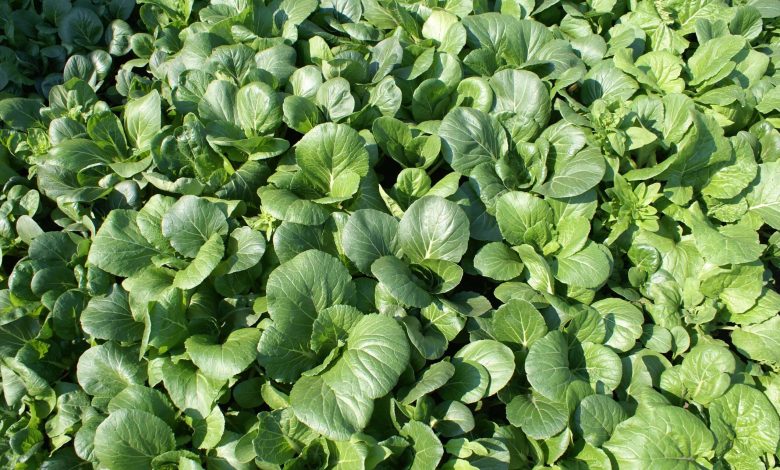
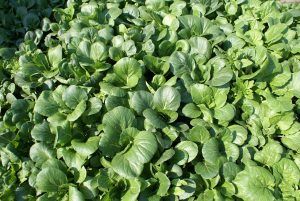 Although its origin is not known precisely, also known as Chinese cabbage, cai xin is a very popular vegetable in Chinese cuisine and in various cultures of Eurasia, America and other temperate zones.
Although its origin is not known precisely, also known as Chinese cabbage, cai xin is a very popular vegetable in Chinese cuisine and in various cultures of Eurasia, America and other temperate zones.
It has a fresh taste similar to cabbage and Swiss chard. It can be grown in the garden, in containers and even indoors.
Cai xin is widely consumed in many dishes. It is low in saturated fat and cholesterol. In addition to being a good source of protein, it also contains dietary fiber, thiamin, niacin, phosphorus, as well as vitamins A, C, potassium, and manganese.
Important points when planting cai xin
- Scientific name: Brassica rapa subsp. chinensis.
- Common Name: Bok choy, pak choi, cai xin, Chinese cabbage, Chinese cabbage, Chinese chard.
- Height: 60 centimeters.
- Light requirement: Direct exposure.
- Temperature: temperate climates.
- Irrigation: High.
- Fertilizer: General fertilizer.
What characteristics does cai xin have?
Cai xin is a green, fast-growing, annual or biennial plant. It reaches a height ranging from 30 to 60 centimeters. It is a type of cabbage with loose leaves, without particle and with thick stems of white or green and tender leaves that are grouped in clusters.
The plants come to form an upright head, with leaves splayed outwards. The white or green stalks are similar to celery. However, those of the cai xin are smoother and not stringy.

The cai xin flowers are grouped in clusters 10 to 30 centimeters long and are concentrated at the apex of the inflorescence. Its sepals are green and its obovate petals are yellow. They bloom during the months of April and May.
Its fruit is a kind of green pod, called silicua, which measures from 2 to 8 centimeters long; each contains up to 18 seeds. For their part, the seeds are spherical, with blackish or brown tones, which can measure up to 2 millimeters in diameter.
When to plant cai xin?
The sowing period outdoors occurs during the months of March, July and August. The main harvest takes place during the months of August, September and October.
It is recommended to wait 2 weeks after the last frost in the region to plant cai xin. Temperatures above 23ºC can cause leaf burn. Below 10ºC, the plant begins to flower and its leaves stop growing as they normally do.
Where to plant cai xin?
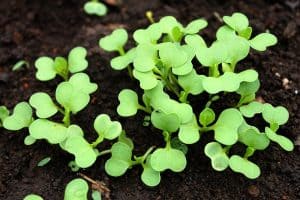 Cai xin germinates in places where the climate is temperate and the temperature ranges between 15 and 25 ºC. However, it is well adapted to hot, dry summers with distinct winters.
Cai xin germinates in places where the climate is temperate and the temperature ranges between 15 and 25 ºC. However, it is well adapted to hot, dry summers with distinct winters.
It thrives in cool, moist, porous, humus -rich soils. It should be planted in full sun or receive at least 3-5 hours of sunlight daily, in places that are sheltered from the wind.
How to prepare the land?
The cai xin can be grown in flat, well-drained soil, free of gravel or stones and shallow, with a depth greater than 45 centimeters. It is recommended to sow it in substrates with a light and sandy loam texture, in soils composed of 60% sand, 30% silt and 10% clay.


Optimum pH fluctuates between 5.5 to 6.8, but can be found in soils with a higher or lower alkalinity or acidity index. If soil amendment is needed, it can be prepared by adding well-rotted manure or organic fertilizer that is high in nitrogen, phosphorus, and potassium.
How do we water the cai xin?
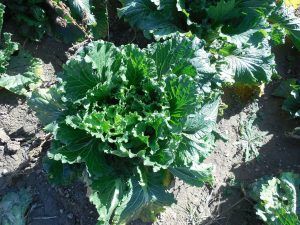 Cai xin needs a lot of water to grow, as it has shallow roots and is also drought intolerant.
Cai xin needs a lot of water to grow, as it has shallow roots and is also drought intolerant.
If the substrate is allowed to dry out, the plants will also dry out and turn into seeds, so it is necessary to monitor the humidity of the growing soil.
Sprinklers, drip tape, or hoses can be used to keep the soil slightly moist, but not soggy.
How often do we water the cai xin?
The soil should be kept evenly moist, especially while the cai xin seeds germinate. Therefore, these plants should be watered regularly, one inch of water per week, preventing the substrate from drying out between waterings.
A layer of mulch can be added on top of the cai xin growing area to retain moisture and regulate the temperature of the area.
How to plant a cai xin step by step?
As mentioned above, climate is key to growing cai xin. Here are the steps to grow this plant outdoors.
- Start the cultivation process 4 or 5 weeks before the last frost.
- Place the seeds in a container inside, 6 millimeters or one centimeter deep, with almost 3 centimeters of space between each plant.
- Wait 4 to 8 days for the seed to germinate.
- Transplant the seedlings to the garden and separate them every 30 centimeters from each other when the temperature is above 10 ºC.
If you want to grow cai xin outdoors, wait 1-2 weeks before the date of the last frost in the region.
What care does cai xin need?
It is important to remove weeds so that the plant does not fight with other species for the necessary nutrients. If desired, a mulch can be made to give extra protection and care to the crop and the soil.
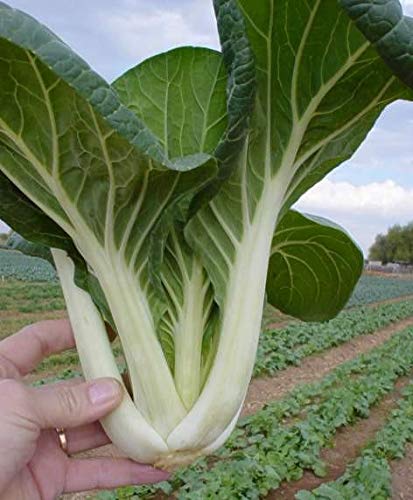
Covering the cai xin with floating row covers can be useful to repel some insects that affect the leaves of the plant and thus avoid marks or holes in them.
What pests and diseases affect cai xin?
The cai xin is susceptible to multiple pests and diseases. In the case of pests, the following are recorded: the cabbage looper (Pieris brassicae and P. rapae), the aphids (Aphis gossypii and Myzus persicae), the black ringworm (Spodoptera littoralis), the ashy aphid (Brevicorne brassicae) and the cabbage moth (Plutella xylostella).
In the case of diseases, cai xin has been affected by: downy mildew (Peronospora parasitica), bacterial spot (Pseudomonas syringae), white mold (Sclerotinia sclerotiorum), leaf spot (Alternaria brassicae and A. brassicicola) and white rust (Albugo candida).

References
- https://en.wikipedia.org/wiki/Choy_sum
- https://en.wikipedia.org/wiki/Brassica_rapa_subsp._chinensis
- https://www.specialtyproduce.com/produce/Choi_Sum_Flowers_11972.php
- https://www.mercadoflotante.com/blog/foodiepedia/choi-sum/
- cai xin flower
- https://www.magicgardenseeds.com/Good-To-Know/Chinese-Cabbage-Pak-Choi-Bok-Choy-%27Tai-Sai%27-(Brassica-rapa-subsp.-chinensis)-organic-A.BRA08-BIO-
- http://sinavef.senasica.gob.mx/CNRF/AreaDiagnostico/DocumentosReferencia/Documentos/MaterialDivulgativo/Infografias/Catalogo%20de%20malezas%20de%20Mexico%20Familia%20Brassicaceae%20(Cruciferae).pdf
- http://repositorio.uchile.cl/handle/2250/178568
- http://www.conabio.gob.mx/malezasdemexico/brassicaceae/brassica-rapa/fichas/ficha.htm
- https://www.gardeningchannel.com/grow-bok-choy-brassica-rapa-subsp-chinensis/
- https://gardenerspath.com/plants/vegetables/grow-bok-choy/
- https://www.thespruce.com/how-to-grow-bok-choy-4125560
- https://www.missouribotanicalgarden.org/PlantFinder/PlantFinderDetails.aspx?taxonid=261920&isprofile=0&
- https://www.uog.edu/_resources/files/wptrc/BokChoy.pdf

![Photo of Agapanthus: [Cultivation, Care, Irrigation, Substrate, Pests and Diseases]](https://www.complete-gardening.com/wp-content/uploads/2022/08/agapanthus-cultivation-care-irrigation-substrate-pests-and-diseases-390x220.jpg)

![Photo of How to Plant a Mimosa Tree: [Complete Guide + Step by Step]](https://www.complete-gardening.com/wp-content/uploads/2021/06/sembrar-mimosa-paso-a-paso-390x220.jpg)
